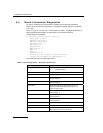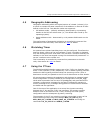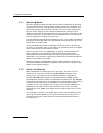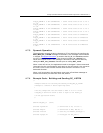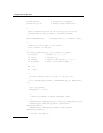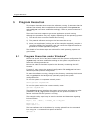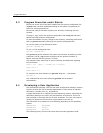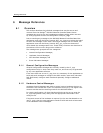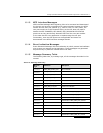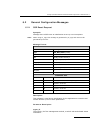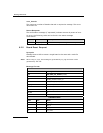
5 Program Execution
34
5.3 Program Execution under Solaris
Ensure the device driver has been installed and the system configuration file
(system.txt) has been modified according to the system requirements to
select the correct protocols etc.
Ensure the code file has been copied to the directory containing the SS7
binaries.
If using s7_mgt, ensure the protocol configuration file config.txt has been
edited to provide protocol configuration.
To start the software running, change to the directory containing the binaries
and run gctload optionally specifying the system configuration file.
To run the system in the foreground enter:
gctload -csystem.txt
To run it in the background enter:
gctload -csystem.txt &
The gctload program initializes the system environment and starts up other
processes. The s7_mgt process configures all the protocol modules. A
banner confirms that the system is running.
The example utility mtpsl may be used to activate and deactivate signaling
links as follows:
mtpsl { act | deact } <linkset_id> <link_ref>
mtpsl act 0 0
mtpsl deact 0 0
To shutdown the host software run gctload using the
–x parameter:
gctload –x
Any modules that have been started by gctload are terminated
automatically.
5.4 Developing a User Application
The development package, with the User Part Development Package, contains
the files to allow the user to develop applications. These consist of makefile
definitions, C header files (.h), and libraries.
A single definitions file is supplied (for each operating system) containing the
definitions relating to the user's own development environment. This file is
then included in the make files for all other processes. The user may need to
modify this definitions file to ensure correct paths etc are set up.
The definitions file is called one of the following depending on the operating
system:
makdefs.mnt (Windows®)
makdefs.mlx (Linux)
makdefs.ms2 (Solaris)
The following library files must be linked with the users application code:



